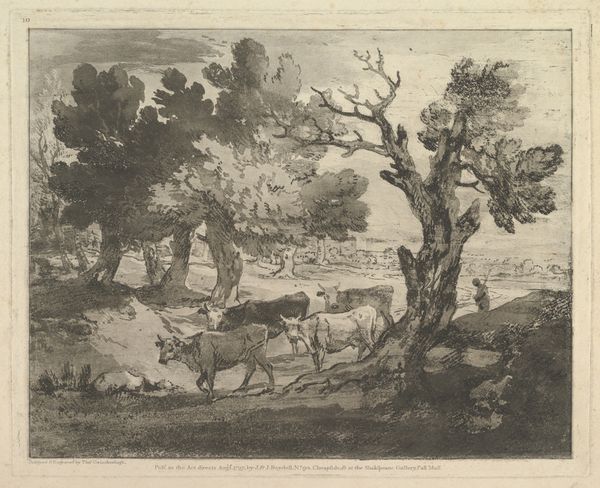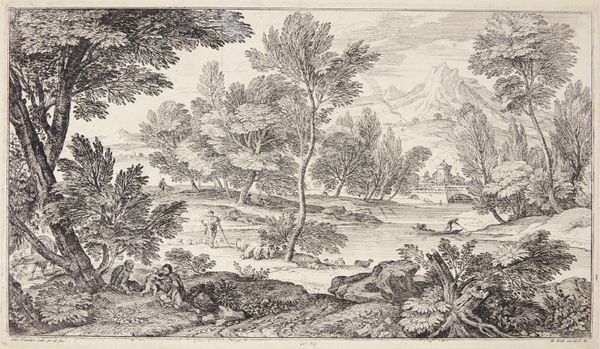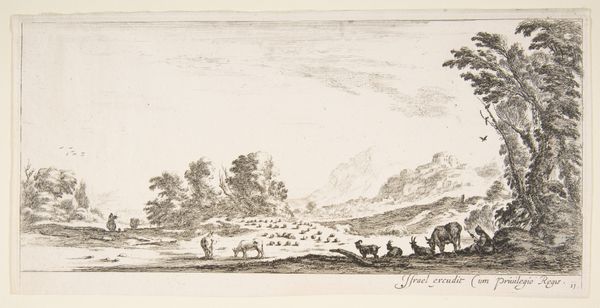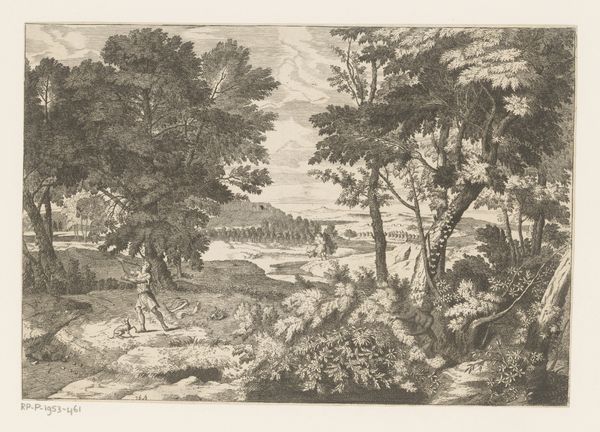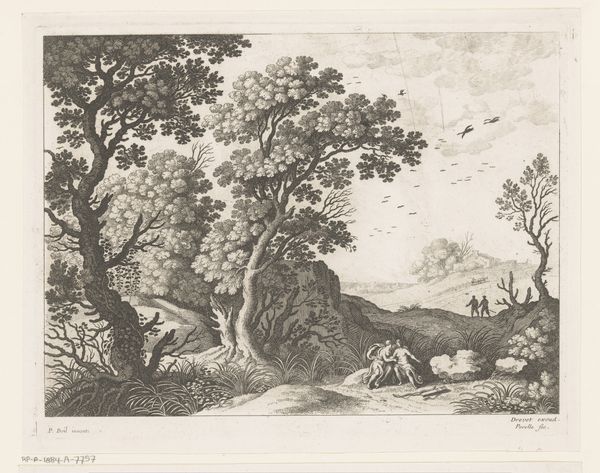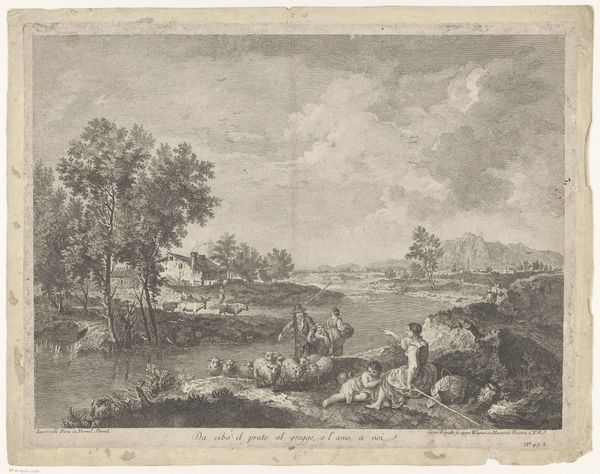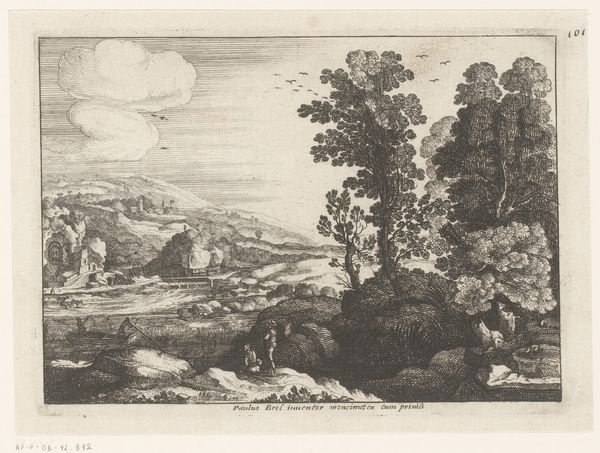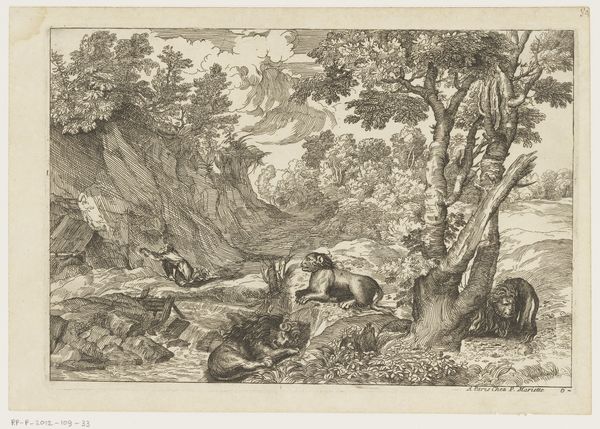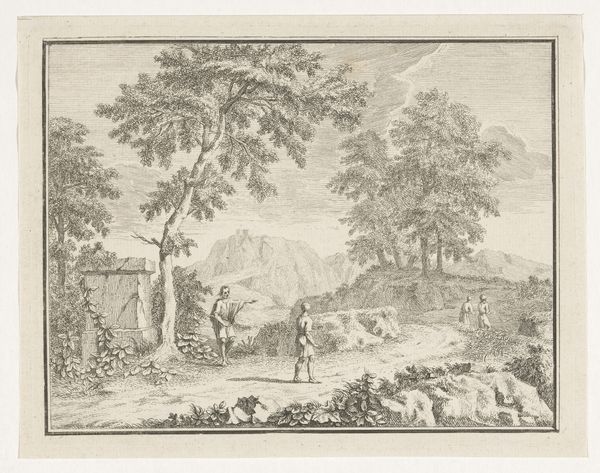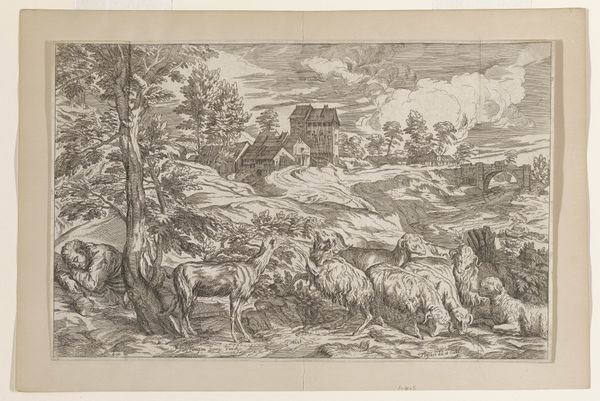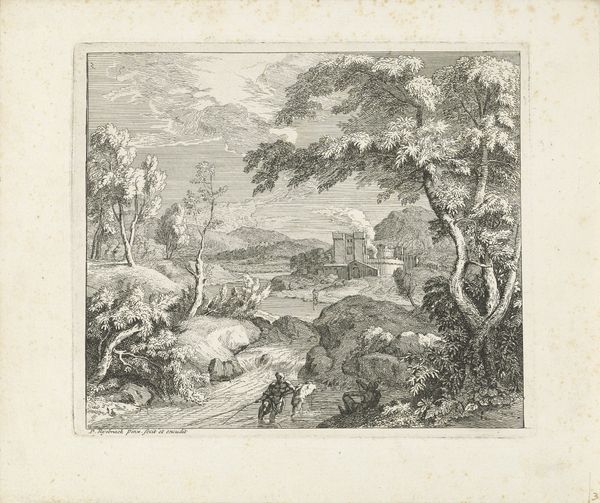
Dimensions: 78 × 171 mm (plate)
Copyright: Public Domain
Curator: This is Ferdinand Kobell's "Landscape - Boy with Horse," etched in 1777. Note how the printmaking process allowed for the wide dissemination of landscape imagery. Editor: Mmm, first impressions? It feels oddly… theatrical. Like a stage set, with that hillock dramatically lit and the tiny figures arranged just so. Almost miniature, and yet there’s a huge amount of atmospheric space. Curator: Exactly! Kobell, through the printmaking process—the specific bite of acid on the copper, the paper used for the impression—carefully constructs the scene to emphasize picturesque qualities valued in that moment. Think about the labor, the multiple stages, the standardization necessary for copies… Editor: The boy on the horse—they seem like afterthoughts, almost lost in the vastness. Did many people own horses then? Curator: Relatively few in that landscape likely had the financial means, highlighting a subtle hierarchy and relation to resources encoded even within "natural" scenes. It reflects a very specific consumption of landscape ideals, doesn't it? How the leisure and mobility implied resonate with broader socio-economic structures. Editor: So, what appears bucolic is actually loaded. I suppose those tiny figures and carefully placed trees are all speaking to larger power dynamics… or aspirations to that lifestyle. Curator: Precisely. Every etching line manifests specific labor, technology and an ideological positioning toward that landscape as commodity. That even the paper plays an important role – what fibres were used, how white it is – they tell a lot about the production contexts. Editor: It's making me think of hand-colored prints—someone sitting at a table, adding the tints, breathing life into a manufactured scene. Funny how a print can capture both spontaneity and industrial processes. Curator: Right, but the “hand” in it shifts. Now we are more keenly seeing it through those combined lenses, aren't we? How mass produced imagery becomes woven into subjective imagination – and, in turn, shapes consumption practices themselves. Editor: It certainly invites contemplation on accessibility to beautiful landscape then, as well as now! Curator: Indeed, an artwork providing insights into both landscape and the mechanisms through which we understand it.
Comments
No comments
Be the first to comment and join the conversation on the ultimate creative platform.
